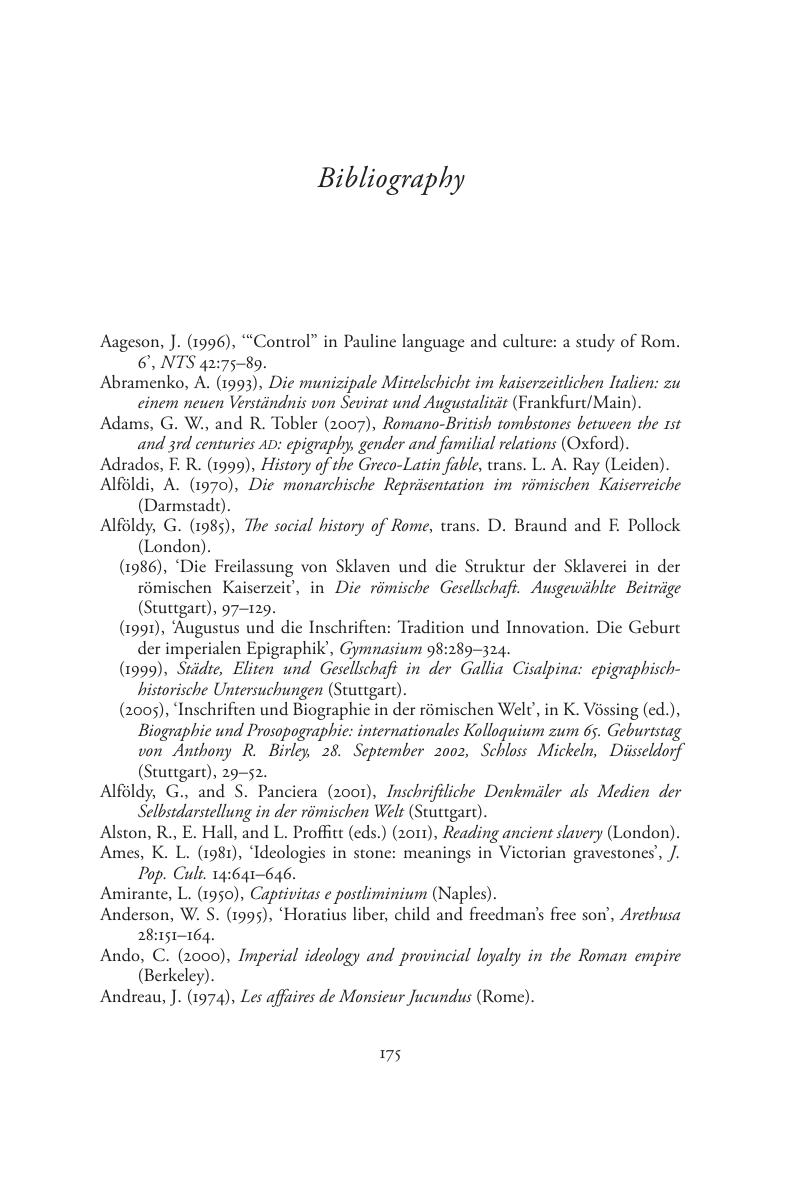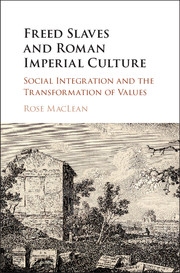Book contents
- Freed Slaves and Roman Imperial Culture
- Freed Slaves and Roman Imperial Culture
- Copyright page
- Dedication
- Contents
- Figures
- Acknowledgments
- Abbreviations
- Chapter 1 Freed Slaves and the Roman Elite
- Chapter 2 Achieving Immortality under the Principate
- Chapter 3 Cultural Exchange in Roman Society
- Chapter 4 Imperial Freedmen and Imperial Power
- Chapter 5 Telling Life Stories
- Conclusion
- Bibliography
- Index
- References
Bibliography
Published online by Cambridge University Press: 09 May 2018
- Freed Slaves and Roman Imperial Culture
- Freed Slaves and Roman Imperial Culture
- Copyright page
- Dedication
- Contents
- Figures
- Acknowledgments
- Abbreviations
- Chapter 1 Freed Slaves and the Roman Elite
- Chapter 2 Achieving Immortality under the Principate
- Chapter 3 Cultural Exchange in Roman Society
- Chapter 4 Imperial Freedmen and Imperial Power
- Chapter 5 Telling Life Stories
- Conclusion
- Bibliography
- Index
- References
Summary

- Type
- Chapter
- Information
- Freed Slaves and Roman Imperial CultureSocial Integration and the Transformation of Values, pp. 175 - 204Publisher: Cambridge University PressPrint publication year: 2018



